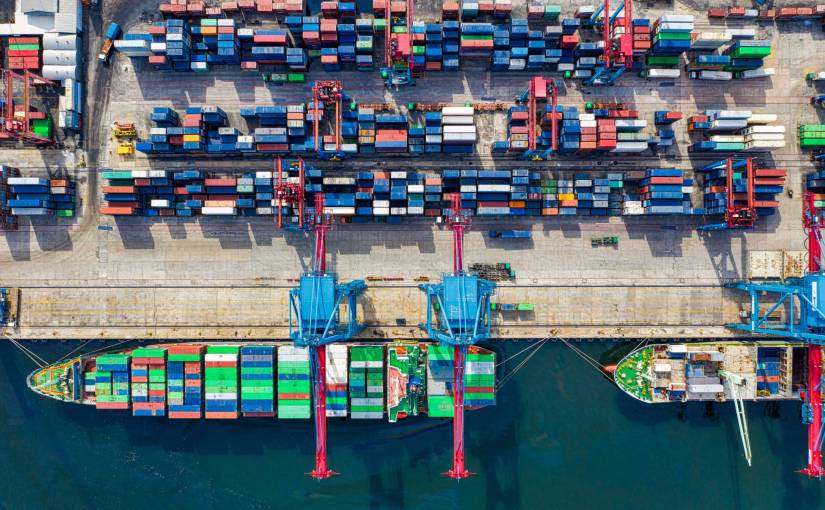The COVID-19 pandemic hasn’t just been hard on people. Supply chains everywhere are struggling.
Shortages of masks have made headline news. Meat processing facilities around the country have closed, causing grocery stores and restaurants to run low. Across the business world, companies are having trouble getting the goods they need to operate.
The good news is, shortages also present opportunities. You may not see weak spots in your supply chain until a shipment is late, or the cost of something you take for granted, like paper or ink, skyrockets.
Seize the silver linings of this crisis. To shore up your supply chain:
1. Map it Out
In our globalized world, supply chains are complex. The first step to strengthening yours is to understand its full scope.
You know your first-tier suppliers, but what about those down the line? How would your company be impacted if a second- or third-tier supplier shut its doors? Does that first-tier supplier have backups?
Beware that vendors may not tell the truth about their own suppliers. The reason is that they don’t want to show weakness. If customers worry about their ability to deliver, they may take their business elsewhere.
Supply chain security and simplicity are popular reasons companies work with group purchasing organizations like Una. A direct purchasing strategy is simply too complex for all but the biggest procurement teams. Plus, GPOs always have backups in case a supplier of a certain good goes bust.
2. Avoid Risky Suppliers
If you do decide to stick with direct procurement, check your mapping for risky suppliers. These suppliers are likely to be adversely affected by economic or political conditions. They may engage in deceptive or immoral practices, such as child labor.
Another place to look for risk? Product recalls. Suppliers who tend to ship a lot of defective products have weaker foundations than their peers. Not only is something they send you less likely to be usable, but they may not be in business for long.
When in doubt, work with regional suppliers. With regional shipments, there are simply fewer miles and national borders to cross. Proximity is a primary reason why 33% of global supply chain leaders have moved their operations out of China, or plan to in the next few years.
3. Digitize Your Supply Chain
Despite the trend toward paperless offices, many companies still rely on paper invoices and book-keeping. Not only does that make errors more likely, but it makes managing the whole procurement ecosystem more difficult.
Experts suggest that identifying points of volatility and waste in a supply chain requires 70-90% visibility, but most companies have just 20% visibility into theirs. These companies may be able to track shipments once they’ve left a supplier’s office, but they’re in the dark about pre- and post-shipping processes.
Do all that you can digitally. Invest in an inventory management system, and encourage your suppliers to hook their own systems up to yours. Set up notifications so you and your suppliers know when you’re running short.
4. Understand the Impact of Tariffs
When the pandemic hit, employers found it difficult to secure personal protective equipment. While part of the reason for PPE shortages was demand, a close second was tariffs. The United States levies tariffs of 15-25% on many imported medical products.
It only takes a small supply chain hiccup for the same dynamic to play out with other products. What if your office was suddenly unable to get computers, printers, or keyboards? What if shortages caused them to double or triple in price?
Tariffs add risk to a supply chain. If any of your goods are imported, find out whether they’re subject to import taxes. If so, be sure you have a backup in each category from a nation that isn’t affected by them.
5. Keep Just Enough on Hand
If there’s one thing this pandemic has taught supply chain professionals, it’s the importance of being prepared. Stockpiling ensures you aren’t left empty-handed if a critical supply runs short.
Although having a safety net of supplies is important, you don’t want to go overboard. With perishable goods, in particular, stockpiling may result in you having to throw out unused supplies. Even if not, stockpiled supplies take up valuable warehouse space and cost money to move.
Inventory management is a balancing act. If in doubt, ask your procurement team’s opinion: How much of each supply should be kept on hand? Which supplies tend to run short soonest? Which ones are easy to get, even when the economy hits a bump?
6. Have a Backup Plan
Keeping extra supplies on hand is never a bad idea, but they won’t last forever. What if your supplier is still shut by the time those extras run out?
You can’t predict the future; what you can do is prepare for it. Have a plan of action for each key supply, whether it’s printer paper or product packaging.
Build your backup plan with a 360-degree approach: What alternative suppliers can you call on? What money do you have saved that can be used if an emergency strikes? How will you communicate with your customers if there’s a delay?
7. Be as Transparent as Possible
The reality is, supply chain disruptions happen to every company. However well you prepare for them, you’ll eventually have to make some hard choices.
You might be tempted to hide disruptions from your customers, but that could do more harm than good. If anything, you should be more transparent than ever.
Tell the truth: Why aren’t you able to honor your product or service commitments? When might you be able to deliver what your customers ordered? What are you doing to expedite the process? The sooner you level with them, the more they’ll respect you for it.
The coronavirus pandemic was a once-in-a-century disruption. But there are all sorts of other reasons your supply chain could take a hit. Don’t be blindsided. It’s time to adjust to the “new normal,” and that means buttoning up your supply chain sooner rather than later.
Image credit: Tom Fisk; Pexels










